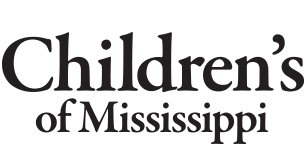Patient/Family Resources
- Children’s Plastic and Reconstructive Surgery Home
- Children's Craniofacial Services
-
Conditions and Treatments
- Conditions We Treat
-
More Information
- Ear deformities: microtia, anotia and constricted ear
- Cleft Lip and Palate
- Congenital nevus
- Craniosynostosis
- Dermoid cyst
- Nose deformities, nasal breathing problems
- Orbital hypertelorism
- Pierre Robin Sequence/Syndrome
- Positional Plagiocephaly: Flat Head Syndrome
- Prominent ears
- Velopharyngeal dysfunction
- Frequently Asked Questions
- Meet Our Team
- Patient/Family Resources
- Visit Preparation
Cleft Lip/Palate Repair Home Care Instructions
A cleft lip is an abnormal opening or gap on one side, both sides, or the middle of the lip. A cleft lip is caused by incomplete development of the baby’s mouth before birth.
Surgery is the treatment to close the gap. Depending on what your surgeon sees during your baby’s physical exam, he or she may recommend additional treatment before surgery:
- If the gap is very wide, your child’s surgeon may recommend nasoalveolar molding. This brings the edges of the lip closer together. It is a process that requires frequent office visits for adjustments to a device that your baby must wear for several months.
- Other children may require a preliminary surgery to join the edges of the lip. This will allow for a smaller gap at the second, full surgical repair.
A cleft palate, like a cleft lip, is caused by incomplete development of the baby’s mouth before birth. It is a gap in the roof of the mouth. A cleft palate is usually repaired when a child is about one year old.
Some children have both a cleft lip and a cleft palate. They may need several surgeries in the first year of life for treatment. During your office visit, we will talk with you about the treatment plan that is best for your child.
Post-Op
Your child will be discharged when he/she is drinking an adequate amount of liquid and when pain is under control.
Diet
- Your child should remain on a soft diet, including foods such as mashed potatoes, and liquids until you are seen at the clinic by your surgeon.
- Breast feeding or bottle feeding are OK. It’s also OK for your child to drink from a cup (without a straw), and to use a pacifier.
- It’s OK to feed your child with a spoon, inserting only the tip of the spoon into the mouth.
Activity
- Place no straws, forks, utensils, or fingers in the mouth at any time.
- Use elbow restraints at all times for two weeks when your child is unsupervised, then at night for one more week.
- It’s OK for your child to sleep on his/her back or side.
- It’s OK to use an infant seat.
Wound Care
- Clean the outside of the nose with saline gauze or a wet Q-tip.
Medication
- Give pain medication as prescribed. You can alternate this with over-the-counter Tylenol® or Motrin® (OK to use Motrin for children older than 6 months) as needed for pain. Keep in mind that the prescribed pain medication also has Tylenol in it. Be careful not to give more than the recommended dose of Tylenol in a 24-hour period.
Follow Up
- Follow up with your plastic surgeon in the Sanderson Tower clinic as scheduled.
- Call (601) 984-5180 with any questions or concerns.
- If your child develops increased pain or swelling, redness or drainage around the incisions, fever or chills, an inability to eat or drink, or other worrisome symptoms, please notify the plastic surgery team right away.
When to Call the Plastic Surgeon
Call us if you see signs of:
- Infection
Fever (temperature higher than 101 degrees), redness, swelling, drainage from lip/nose/palate (Some bloody drainage is normal during the first 24 to 48 hours after surgery, but call if you are concerned about what you see.) - Dehydration
Not making wet diapers, refusing to drink, lethargy, not making tears when crying - Difficulty breathing
Excessive snoring, loud breathing, overall appearance of effort for each breath - Pain that doesn’t improve
Over-the-counter pain medications do not control/help pain
Back to Children's Plastic and Reconstructive Surgery Patient Information



 UMMC
UMMC